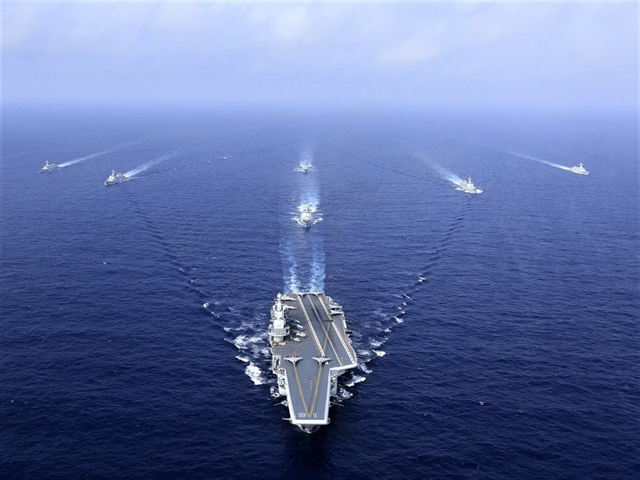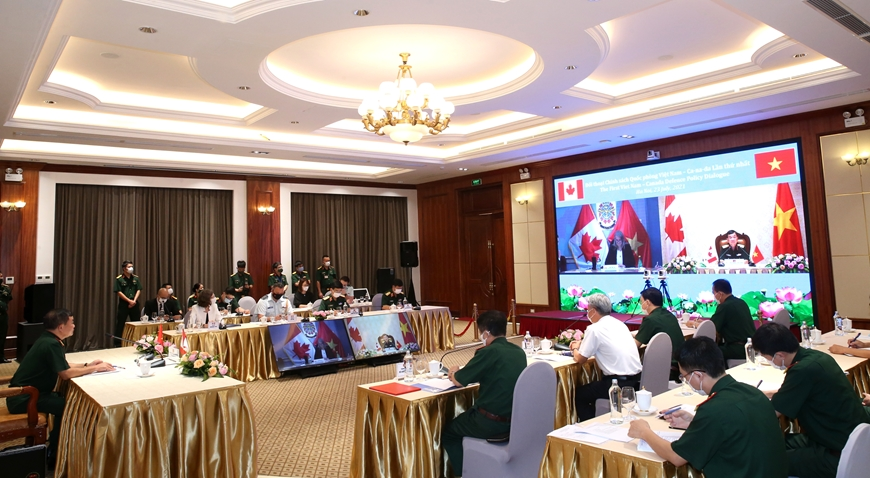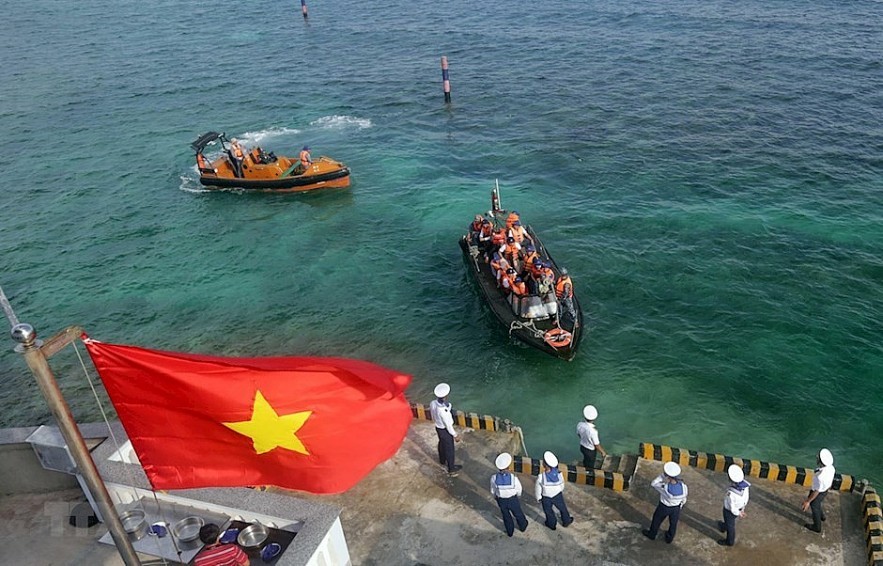UK Warship Enters South China Sea Despite Beijing Warnings
| China announces naval drill in South China Sea (Bien Dong Sea) | |
| Vietnam, Canada Discuss South China Sea Issue at First Defense Policy Dialogue | |
| Vietnam Steps up Defence Ties with US, UK |
The UK warship entered South China Sea in the context that China is holding military drills in two navigation restriction areas in the region.
Experts said on Tuesday that the Chinese People's Liberation Army (PLA) will stand ready to deal with any improper acts by the UK warships and see their South China Sea tour as a chance for practice, as reported by Global Times.
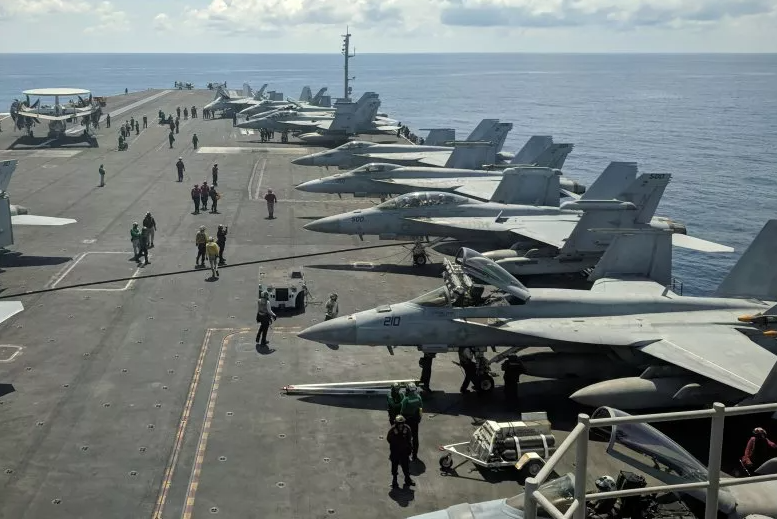 |
| U.S. Navy F/A-18 Super Hornets fighters and an EA-18G Growler electronic warfare aircraft on board USS Ronald Reagan aircraft carrier in the South China Sea on its way to Singapore on October 16, 2019. Photo: Getty Images |
From Tuesday to Thursday, China will hold military exercises in the South China Sea southeast to the coastlines of Chuandao, South China's Guangdong Province, and passing vessels should stay five nautical miles away from the restricted area, according to a navigation restriction notice the Maritime Safety Administration of China on its website on Monday.
Another area in the South China Sea off the coast of Guangdong's Maoming is also hosting military exercises, from Monday to Wednesday, according to a separate navigation restriction notice.
As the PLA drills go on, a UK aircraft carrier task force, led by the HMS Queen Elizabeth carrier that has long hyped its plan to challenge China by transiting the South China Sea, arrived in Singapore on Monday, according to the carrier's Twitter account.
The U.K. warship's entry into the South China Sea is just the latest amplification of tension between the Chinese military and British allies including the United States and Australia, according to News Week.
And the move has reinvigorated debate about China's claim to the nearly 1.3 million-square-mile area as part of its sovereign territory—something Beijing says it has rights to as part of the Law of the Sea Convention. Last week, China criticized NBC's Olympics coverage for showing an "incomplete map" of its territories by not including Taiwan or the South China Sea as being under its ownership.
But a 2016 ruling by the International Court of Justice in the Hague rejected China's claim and allowed the U.S., U.K. and Australia to conduct routine freedom of navigation operations (FONOPs) in parts of the South China Sea.
Following that 2016 ruling, the British warship ignored Beijing's warnings and entered the South China Sea to carry out a FONOP exercise.
"The exercise, to advance interoperability and coordination between the two navies, builds on the deep and long-standing defence partnership between the UK and Singapore. It was also the first time that ships from the Royal Navy's 5th generation Carrier Strike Group exercised alongside the RSN," the U.K. Ministry of Defence said in a statement Tuesday.
U.S. Secretary of Defense Lloyd Austin joined the British in condemning China's continued claims to the entire South China Sea region.
"Beijing's claim to the vast majority of the South China Sea has no basis in international law. That assertion treads on the sovereignty of states in the region. We continue to support the region's coastal states in upholding their rights under international law," the U.S. defense secretary said Tuesday.
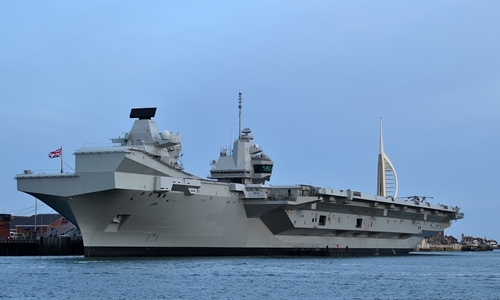 |
| The HMS Queen Elizabeth aircraft carrier is pictured at anchor on the Solent, following an event to commemorate the 75th anniversary of the D-Day landings, in Portsmouth, southern England, on June 5, 2019. Photo: AFP |
Britain’s ‘Muscle-Flexing’
In response to reports that Britain’s newest aircraft carrier would be deployed to the Pacific region, including the contentious sea, for its first operational mission, Chinese defence spokesman Tan Kefei was quoted in the South China Morning Post in early January as saying:
“The Chinese side believes that the South China Sea should not become a sea of great power rivalry dominated by weapons and warships. The real source of militarisation in the South China Sea comes from countries outside this region sending their warships thousands of kilometres from home to flex muscles. The Chinese military will take necessary measures to safeguard its sovereignty, security and development interest as well as peace and stability in the South China Sea.”
So far there has not been any official statement from China in regard to the reported presence of UK warships in the contested waters, Sputnik reported.
While the Chinese military drills are not likely directly related to the UK warships, they show that the PLA is at a high combat readiness, the expert said, noting that just like US warships that intruded Chinese islands and reefs in the region, if UK vessels do the same, they will also be expelled by the PLA.
The PLA will closely monitor the UK warships' activities, stand ready to deal with any improper acts, and also see this as a chance for practice and for studying the UK's latest warships up close, another Chinese military expert told the Global Times, requesting anonymity.
The South China Sea has some of the busiest sea lanes in the world and is the lifeline of China's maritime trade, and the allegation that "freedom of navigation is under threat" in the South China Sea is simply untenable, a spokesperson at the Chinese Embassy in the UK said on Tuesday.
"If this allegation is true, the threat could only come from the one who deploys a carrier strike group to the South China Sea half a world away and flexes its naval muscles to heighten the military tension in that region," the spokesperson said.
What is the real source?
The real source of militarization in the South China Sea comes from countries outside this region sending their warships thousands of kilometres from home to flex muscles. The Chinese military will take necessary measures to safeguard its sovereignty, security and development interest as well as peace and stability in the South China Sea."
UK Warship Incident
HMS Defender was involved in a tense incident in late June as the destroyer broke off from the British battle group in the Mediterranean and enter the Black Sea where it triggered Russia's anger by breaching territorial waters off the Crimean Peninsula.
The violation prompted Russian forces to fire warning shots and scramble Su-24M fighters to drop bombs in the path of the destroyer after it ignored other warnings telling it to leave.
Moscow blasted the incident as a deliberate provocation, while London initially offered a series of contradictory explanations on what had transpired.
The UK Defence Ministry denied that Russia fired any warning shots, while a BBC journalist onboard the ship confirmed that they took place, while the British Embassy in Moscow maintained that the vessel was just carrying out “innocent passage through Ukrainian territorial waters.” However, a video published by the Russian security service showed the ship ignoring warnings only exiting Russia's waters after the shots were fired.
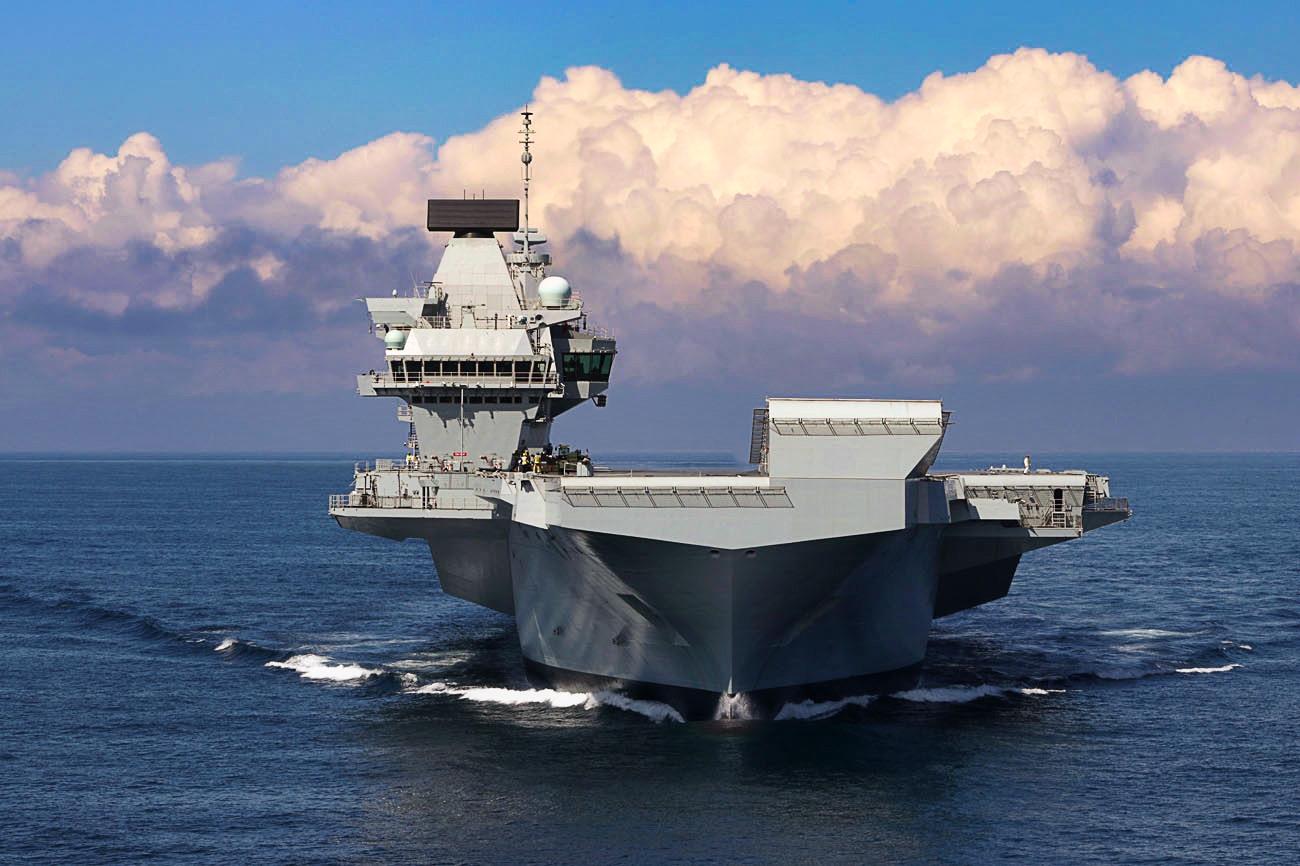 |
| Photo: Royal Navy |
PLA stages S.China Sea drills, shows high combat readiness amid UK carrier tour
China is holding military drills in two navigation restriction areas in the South China Sea region amid news that a UK aircraft carrier task force arrived in Singapore on Monday and is about to enter the South China Sea with the plan of transiting "international waters claimed by China." Experts said on Tuesday that the Chinese People's Liberation Army (PLA) will stand ready to deal with any improper acts by the UK warships and see their South China Sea tour as a chance for practice.
From Tuesday to Thursday, China will hold military exercises in the South China Sea southeast to the coastlines of Chuandao, South China's Guangdong Province, and passing vessels should stay five nautical miles away from the restricted area, according to a navigation restriction notice the Maritime Safety Administration of China on its website on Monday.
Another area in the South China Sea off the coast of Guangdong's Maoming is also hosting military exercises, from Monday to Wednesday, according to a separate navigation restriction notice.
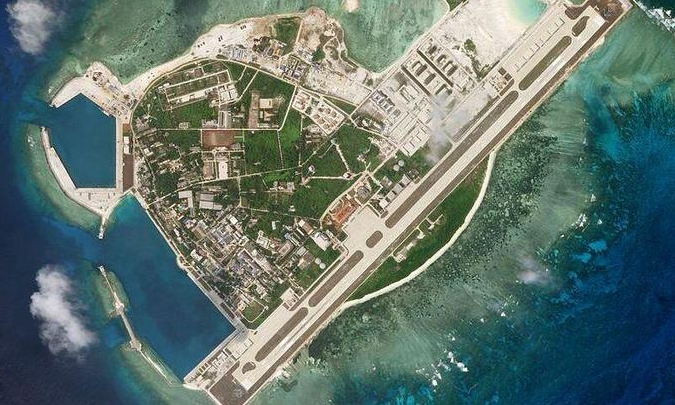 | South China Sea Code Of Conduct Negotiation Struggles As Tension Rises, Said Experts “ASEAN members want to resume negotiations as a means of restraining China’s assertiveness," South China Morning Post quoted an expert in its recent article. |
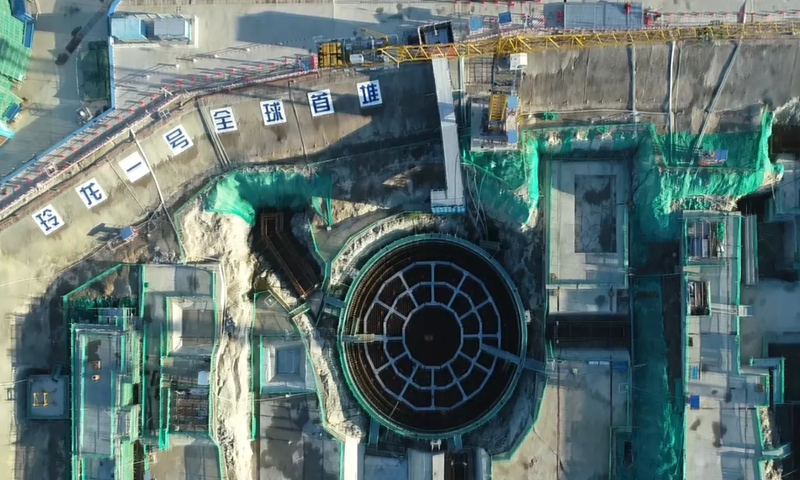 | Construction On World's First Commercial Modular Small Reactor Starts In China The world's first commercial modular small reactor on land, the Linglong 1, has officially entered into the construction phase for a demonstration project in Changjiang ... |
 | US Helps ASEAN Raise Pandemic Response Capacity The United States has earmarked US$96 million to help Southeast Asian countries improve their pandemic response capacity, US Secretary of State Antony Blinken announced on ... |
Recommended
 World
World
Pakistan NCRC report explores emerging child rights issues
 World
World
"India has right to defend herself against terror," says German Foreign Minister, endorses Op Sindoor
 World
World
‘We stand with India’: Japan, UAE back New Delhi over its global outreach against terror
 World
World
'Action Was Entirely Justifiable': Former US NSA John Bolton Backs India's Right After Pahalgam Attack
 World
World
US, China Conclude Trade Talks with Positive Outcome
 World
World
Nifty, Sensex jumped more than 2% in opening as India-Pakistan tensions ease
 World
World
Easing of US-China Tariffs: Markets React Positively, Experts Remain Cautious
 World
World

